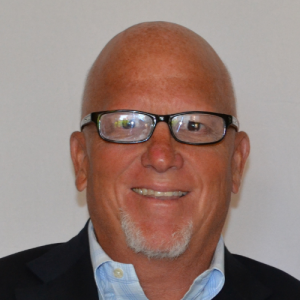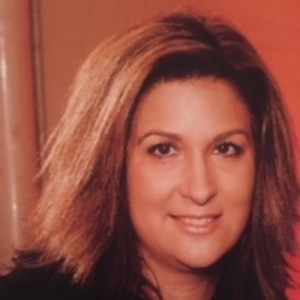Five Minutes With EagleBank


Pictured:Rich Devaney and Dara Koller
The HAND network is hard at work to address the growing housing affordability challenge across the Capital Region. Five Minutes With is a series highlighting these members and other stakeholders. This informal conversation delves into their recent projects, the affordable housing industry, and more. In the latest edition, we have a conversation with EagleBank‘s Rich Devaney, Senior Vice President and Dara Koller, SVP & Deputy Director. They chatted with us about their extensive experience in the affordable housing and community development industry and how they landed in this space. Rich highlights past challenges, lessons learned, and his advice to emerging leaders seeking to make an impact. Dara shares key takeaways from her experience, what she is bringing into her new role, and other her interest outside of affordable housing. Check out our dialogue below:
HAND: Both of you have extensive experience in the affordable housing and community development industry – Can you tell us about your professional journey and how you landed in this space?
DK: I have 20 years of industry experience, working in leadership roles at Freddie Mac and agency lenders supporting Fannie Mae and Freddie Mac multifamily executions, primarily focused on affordable rental housing executions for both agencies, including new construction and preservation of affordable rental housing properties. While at Freddie Mac, I was also involved in the development and roll-out of a few new products supporting the affordable rental housing industry as well. When I first began working on affordable rental housing transactions, it was not the most well understood or popular asset type in the industry compared to market rate rental housing, but I always believed it was extremely important and I was excited to be part of an industry focused on solving the growing need for affordable rental housing in the U.S.
RD: I began my career just after the passing of the CRA legislation and immediately prior to LIHTC legislation being rolled out, working with and for some of the most respected and innovative industry icons in the DC market. It was an exciting time, fusing the tension between regulatory pressure in the banking industry and innovation and expansion of and in the community development and non-profit sector intent on increasing its impact in significantly underserved neighborhoods. My focus and vision was grounded in building high-impact community development and affordable housing businesses within and with large institutions (Bank of America, Fannie Mae, top 5 Life Companies) under the rubric of profitability, sustainability and scalability. My experiences took me through the capital stack and from neighborhoods to national presence. Throughout, my greatest experience to date was setting up this FHA business within EagleBank, coupling the best of financial strength, innovation and flexibility in its ability to deliver capital within the community it serves.
HAND: Rich, you launched EagleBank’s FHA Multifamily Lending Division in 2015, in addition to several other investment initiatives for the bank. Can you tell us about one of your largest challenges over the past six years and what you have learned?
RD: Our FHA Multifamily business is a product line that falls squarely within the Bank’s commercial real estate span of lending. As such, our task was to integrate this business in a collaborative way, not competitive, with the balance sheet lending activity, getting the buy-in from the line lenders and alignment in goals and objectives…..”Enlightened self-interest”. Having set up multiple businesses over my 35- year career, this one presented unique challenges, including how to integrate. It took a solid 3 years of repetition, “proving the thesis” and trust building to get to the point where the value chain is clear and tangible. Presently, every single transaction within the FHA pipeline will touch the Commercial Real Estate balance sheet. Lesson learned was that you can get buy-in strategically at the highest level, but you must get buy-in tactically where the rubber hits the road with the people who make the business happen.
HAND: Dara, you are fairly new to the bank – what key takeaway(s) from your experience thus far are you bringing into your new role?
DK:
- There is a continuing need for safe, decent affordable rental housing and supportive services in our local communities and EagleBank has made a significant contribution to the growth across the Washington D.C. market and in communities throughout the Mid-Atlantic over the last 20 years. EagleBank continues to play an important role in financing affordable multifamily rental housing, which has helped build and maintain safe and economically stable communities which significantly improve the quality of life for its residents.
- We have a tremendous opportunity to continue to make a contribution to the local community to provide much needed affordable rental housing through our deep relationships with affordable housing developers and investors, as well as EagleBank’s FHA multifamily business, which allows us to do business anywhere in the U.S. We are a community bank, with national capabilities with our FHA multifamily licenses. I think that is a powerful combination.
- My strong affordable housing and multifamily experience will augment EagleBank’s growing FHA multifamily business. In this new role, I will be dedicated to FHA loan originations, business development as well as serving as a resource for the Bank’s focused efforts on affordable rental housing.
HAND: Rich, do you believe there is a “secret sauce” to addressing housing affordability and creating more equitable communities in our region? If so, what do you think that is? What do you think is the largest obstacle?
RD: I believe the private financing vehicles and resources are readily accessible and in sufficient amounts to have great impact. There needs to be, and always has been, focus on equity in the delivery and availability of affordable housing. One of my greatest mentors emblazoned in my mind “you are what you measure”, so to solve issues related to equity, we need goals, transparency and accountability….period! My perspective is that the largest obstacles in the production of affordable housing are the public entitlement process, zoning, planning, and permitting. Some municipalities have processes that take up to 3-5 years which infuses risk, uncertainty and viability to the process.
HAND: Rich, what advice would you give to emerging leaders who are seeking to make an impact in this space?
RD: Be flexible – issues are rarely binary choices, every situation is a learning experience – accept set-backs as a gift and surround yourself with diversity – holistically.
HAND: Rich and Dara, what are you most looking forward to over the coming months at EagleBank? Are there any projects or programs that you are particularly excited about?
RD & DK: Furthering the synergies within the Bank, our investment in the Washington Housing Initiative and further coupling our balance sheet and FHA business.
The FHA Multifamily Group is an emerging contributor to the strategic goals and objectives of the CRE Group and EagleBank.
EagleBank financed a handful of key affordable housing projects in the Washington D.C market including:
- More than $81 million in financing to support a key affordable housing project in Bethesda MD, which includes 401 multifamily housing units situated on five separate land parcels.
- Phase I of Addison Row Apartments, Capital Heights, MD a planned community consisting of a 321 unit multifamily building. The project is currently in lease-up. The community caters to workforce housing needs and in addition to affordability, offers large unit sizes compared to new construction in Washington, D.C. Phase II will add 327 units.
- A construction loan used in conjunction with 4% LIHTC to rehabilitate a 60 unit LIHTC affordable community located in the Barry Farms neighborhood of Southeast Washington, DC. After completion, a HUD FHA Section 223(f) refinance application to exit the bank construction loan.
- A $50 million construction loan for a to-be-built low income housing project above retail space located in the Capital Hill area of Washington, DC. The project will utilize 4% LIHTC and a long-term rental subsidy contract with the DCHFA.
- EagleBank is currently working on a few notable affordable housing transactions, including the renovation and recapitalization of a project-based Section 8 property located in the Anacostia neighborhood in Southeast Washington DC utilizing 4% LIHTC.
HAND: Rich and Dara, if you weren’t working in this space, what might you be doing?
DK: I have always been interested in architecture and design, focused on creating and transforming spaces to meet the needs of a building’s occupants and looking for solutions to present and future issues, such as climate change. Incorporating sustainable and green building design in construction projects is increasingly important to reduce the carbon footprint and use our energy and water resources more efficiently.
RD: I have been consistent in responding to this question when asked over the past 30 years. I would be dedicating 100% of my time working in programs that focus on disadvantaged youth, focusing on education and financial literacy. To me, one of the biggest gaps we have racially and socio-economically is knowledge of and access to financial tools, products and services.





Leave a Reply
Want to join the discussion?Feel free to contribute!